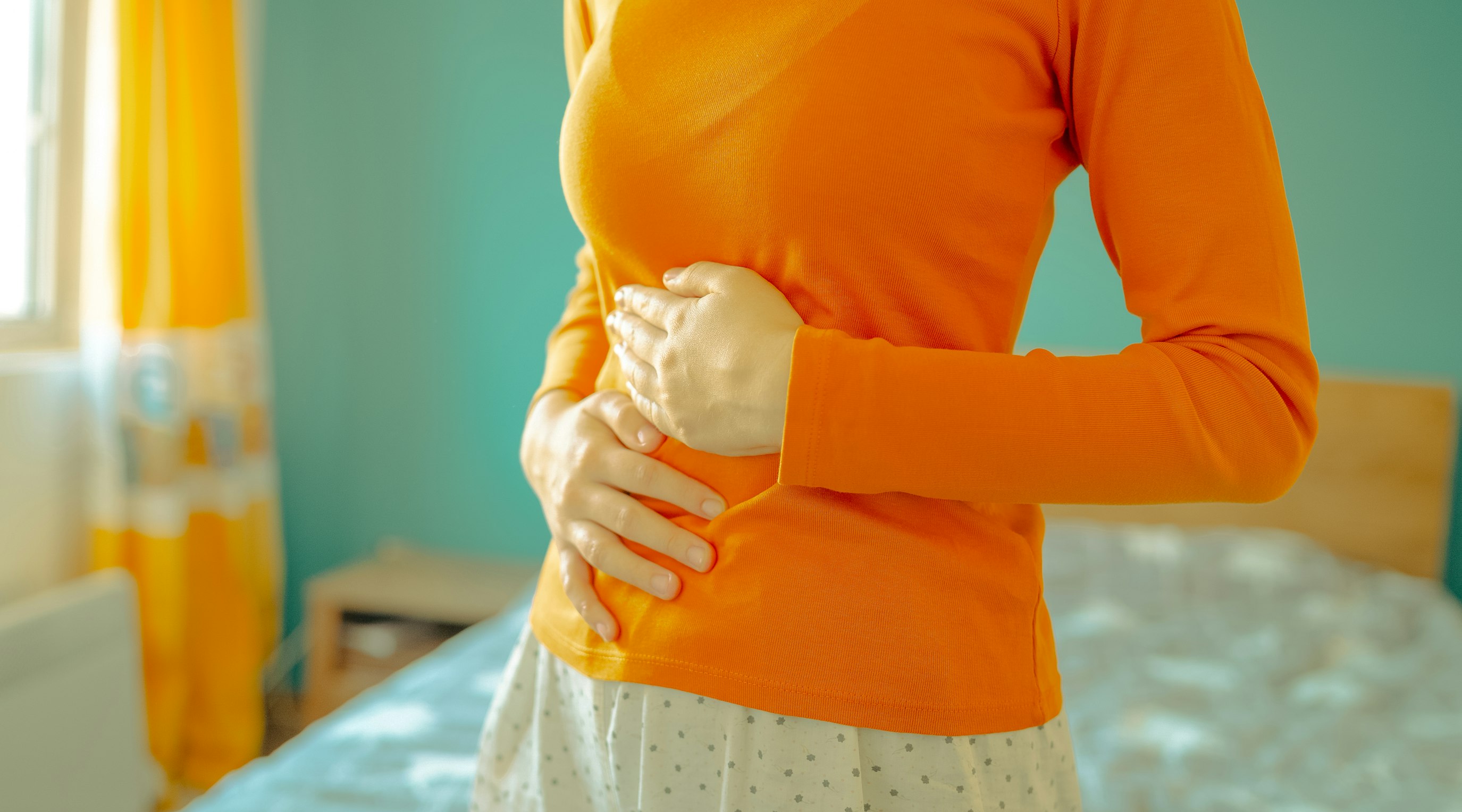Luckily, many patients with endometriosis are finding potential success using cannabidiol (CBD) products as one part of their treatment plan to manage symptoms. Before we look at which CBD products seem most suitable for this disorder, let’s examine the signs and symptoms of endometriosis.
What is endometriosis?
Endometriosis is an autoimmune disorder in which abnormal growth of cell tissue (similar to the endometrium or tissue that normally lines inner uterus walls) grows outside the uterus. The endometrial-like tissue thickens, breaks down and bleeds with each menstrual cycle just as the endometrial lining does.
However, this tissue cannot exit the body like what happens when the endometrial lining sheds during menstruation, so it becomes trapped within the body. This disorder commonly involves ovaries, fallopian tubes, and the pelvis. Heavy bleeding and fertility issues are also associated with this disorder.
The role of CBD in managing endometriosis symptoms
CBD has been shown to have the potential to women who suffer from endometriosis manage symptoms of pain, cramping and discomfort.
Patients should consult their medical cannabis physician and/or their general practitioner (GP) to consider specific factors impacting their health, and potential interactions with CBD and any other medication they are taking. Healthcare professionals can provide advice to women about the most effective ways to administer and dose CBD to potentially help manage endometriosis symptoms.
The importance of proper CBD dosage
It is important to take CBD consistently for roughly a month (or more) in order to assess its effects most accurately. Many healthcare professionals will explain that it takes some time to gain its full effectiveness. It is essential to track your daily intake as well as the severity and type of endometriosis symptoms. Starting a wellness journal is recommended for all medicinal cannabis patients, as this will give you more specific insight into how your treatment plan is helping manage symptoms over a longer period.
Understanding CBD dosage for endometriosis
Make sure you note the strength of the specific CBD tincture or product before taking a dose. You will want to determine the amount of CBD in each application, and also whether it is full or broad spectrum.
While we cannot give specific dosage suggestions here, to potentially reduce inflammation and pain associated with endometriosis, you can have a chat with your prescribing doctor. This is the only way to make sure you are receiving the correct dosage size for your condition.
Factors affecting CBD dosage
Your height, weight, and general health condition are key factors affecting bioavailability or the rate at which CBD enters and circulates throughout the body. You must also consider the amount of food you have eaten and how well-hydrated you are.
Recommended starting dosage
Start with a minimal dose to get used to the mode of CBD administration. Make sure you document dosing amounts and adjust as needed. When it comes to specific dosage sizing, that is something that will be best discussed with your prescribing doctor.
CBD administration methods
You have some options for CBD products to take, but many women take CBD oil sublingually, or by placing several drops beneath the tongue. Other methods of using CBD include topical creams, transdermal patches, inhalation using a CBD vape, and CBD-infused gummies.
CBD edibles take a longer amount of time to be absorbed by the body (effects become noticeable within 30 -120 minutes). Edibles are not as likely to produce a high concentration peak like inhalation, but the effects may be felt for a longer duration.
Inhalation
CBD vaping is a popular mode of delivery as the effects can be noticed within a few minutes, reach a high concentration in about 30 minutes, and remain active for several hours. Inhalation offers an easy way to dose and consume, and it is somewhat discreet.
Topical application
Topical creams are an excellent choice for those patients who want to focus relief close to a specific body part experiencing significant pains or aches. For example, a transdermal patch placed on the lower back or stomach may be effective for alleviating cramps.
Topical formulations in the form of balms, creams, and lotions may absorb slowly. Cannabinoids released from the topical products do not accumulate in concentrations that may interact negatively with other medications.
Sublingual consumption
Tinctures offer quick relief and an easy way to monitor dosing amounts. Drops can be added under the tongue, or the tincture drops can be added to a drink if the person does not like CBD’s taste. Keep in mind that, when added to food or drink, the tincture will pass through the digestive system and take longer for the effects to take hold.
Risks and side effects of CBD administration
CBD administration can possibly cause some undesirable side effects such as dizziness, upset stomach and other gastrointestinal issues, and may cause adverse interactions with other medications. Always speak to a doctor that is experienced in prescribing medicinal cannabis products before taking any CBD products.
Potential risks associated with CBD administration
Upset stomach, diarrhoea, dizziness, and fatigue are some common negative side effects of CBD consumption. These effects do not happen frequently, but there are some people who are very sensitive to CBD.
Common side effects of CBD
Some common effects include a dry mouth, upset stomach, diarrhoea, and drowsiness. These common side effects can happen with even the purest, high-quality CBD products. CBD made from questionable raw materials can further complicate a person’s reaction to CBD.
This highlights why it is important to purchase CBD from trustworthy companies that follow sterile and compliant manufacturing standards and monitor product quality by using third-party testing labs.
How to mitigate risks and side effects
One way to mitigate negative effects is to avoid taking too much CBD in any one dose. Also, make sure you are using premium products that are free of contaminants and toxic materials.
Avoid adverse medication interactions by making sure any medications you are already taking will not cause a negative interaction with CBD.
These are factors that your prescribing doctor will be able to guide you through.
CBD Dosage for specific endometriosis symptoms
Specific dosage sizes are something that must be discussed with your prescribing doctor, as there is a wide range of factors that can and will affect what the correct dosage will. With that said, this study showed that a dose of between 2 mg/mL and 9 mg/mL may be an effective amount for acute, spontaneous cramping.
If you are more interested in managing continuous or steady discomfort, your doctor may suggest that you adjust CBD amounts over time. Make sure you increase the amounts slowly so that you can identify the ideal amount and effect and avoid overdoing it with a large and unnecessary dose.
Pain management
Many women have provided anecdotal evidence that applying a topical cream to their stomach helps reduce pain associated with endometriosis.
Inflammation reduction
CBD has shown potential to lessen inflammation and provide relief.
Nausea and vomiting relief
Endometriosis lesions growing close to the gastrointestinal tract can cause nausea and vomiting. CBD may minimize the queasiness that endometriosis may cause.
Conclusion
The NHS currently spends over £5 billion a year on the treatment of inflammatory pain conditions including fibromyalgia, neuropathy, endometriosis, and rheumatology. Regulatory bodies such as the National Institute for Health and Care Excellence (NICE) and the National Institute for Health and Care Research (NIHR) specifically have called for more research on CBD and cannabinoid medication for pain therapies.
If you need an alternative approach to manage your health condition, Releaf is here to help. Our monthly packages are based on your cannabis prescription, and we offer specialist consultations for medical cannabis and a unique medical cannabis card for protection.



